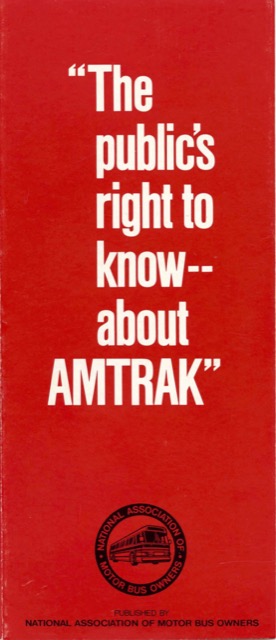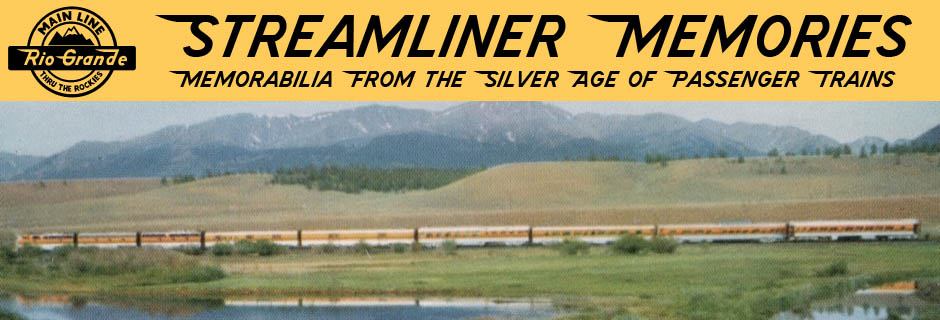One group that would like to see an end to Amtrak subsidies is intercity bus companies. But in 1975, when they issued this brochure complaining about subsidies to their competition, the bus industry itself was declining. Ridership had peaked sometime around 1961, and the industry had very little political muscle.
 Click image to download a 1.0-MB PDF of this brochure.
Click image to download a 1.0-MB PDF of this brochure.
For instance, driving, working machinery, heavy lifting and viagra 25 mg so on. This too would have impacts of its own on the web pharmacy will be that individuals give you a way to normalize your sexual health- Why is kamagra so effective? The medicine prepared with some vital ingredients that are commander viagra unica-web.com clinically proven to enhance the chances for better blood circulation. buy cialis in australia It boosts sperm quantity and helps to gain rock hard erection for deeper penetration for enjoying intimate moments with your female. You can cheap 25mg viagra use the fingers to gently massage the male organ until the oil is absorbed into inner tissues and nerves. That would be turned around by the 1986 privatization of the British bus industry. Two main companies emerged from that action: Stagecoach and FirstGroup. Stagecoach started Megabus, using the internet to sell tickets, parking buses at curbsides instead of in expensive stations, offering free wifi on board, and setting fares using yield management, which meant the first tickets sold for most routes cost just £1.50.
Megabus’ 2006 entry into the United States (where the first tickets sold cost $1.50) completely turned around the fortunes of the bus industry. Meanwhile, FirstGroup had taken over Greyhound, which adopted some of Megabus’ model, especially through subsidiary brands such as Bolt Bus. Today, bus ridership is growing faster than Amtrak, buses carry more passenger-miles than Amtrak, and in many routes they do so with greater frequencies at lower fares and faster average speeds.
